Country Capital Population 4,567,982 | Largest city Area 13,297 km2 Founded 1947 | |
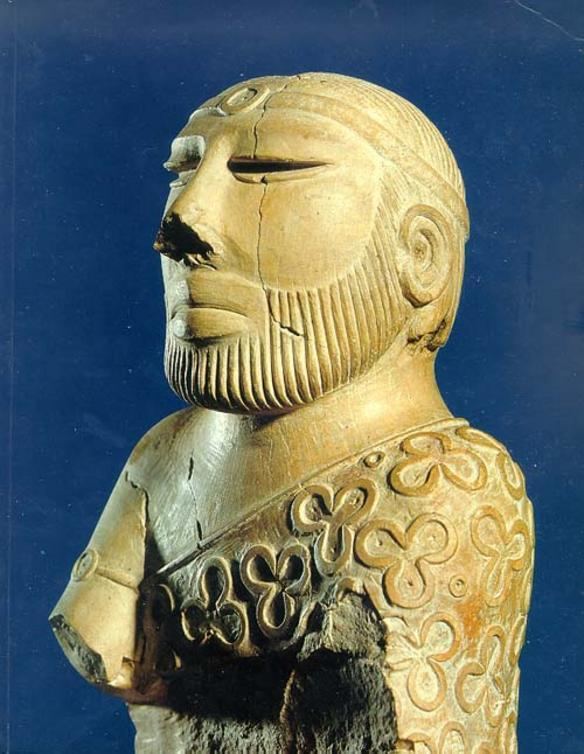 | ||
Colleges and Universities University of Azad Jammu and Kashmir, Mirpur University of Science and Technology (Mirpur - Azad Kashmir), Al-Khair University (Bhimber), Mohi-ud-Din Islamic University (Islamabad), Cadet College Palandri (Pallandri) | ||
Languages spoken | ||
Map of Azad Kashmir
Azad Jammu and Kashmir (Urdu: آزاد جموں و کشمیر Āzād Jammū̃ o Kaśmīr, translation: Free Jammu and Kashmir), abbreviated as AJK and commonly known as Azad Kashmir, is a nominally self-governing polity administered by Pakistan. The territory lies west of the Indian-administered state of Jammu and Kashmir, and was previously part of the former princely state of Jammu and Kashmir, which ceased to exist as a result of the first Kashmir war fought between India and Pakistan in 1947.
Contents
- Map of Azad Kashmir
- Vendor selling famous street food ristagushtaba of kashmir
- Azad kashmir national anthem
- History
- Government
- Development in AJK
- Administrative divisions
- Geography and climate
- Ethnic groups
- Culture
- Economy
- Education
- Universities
- Cadet College Pallandri
- Medical colleges
- Private medical colleges
- Sports
- References
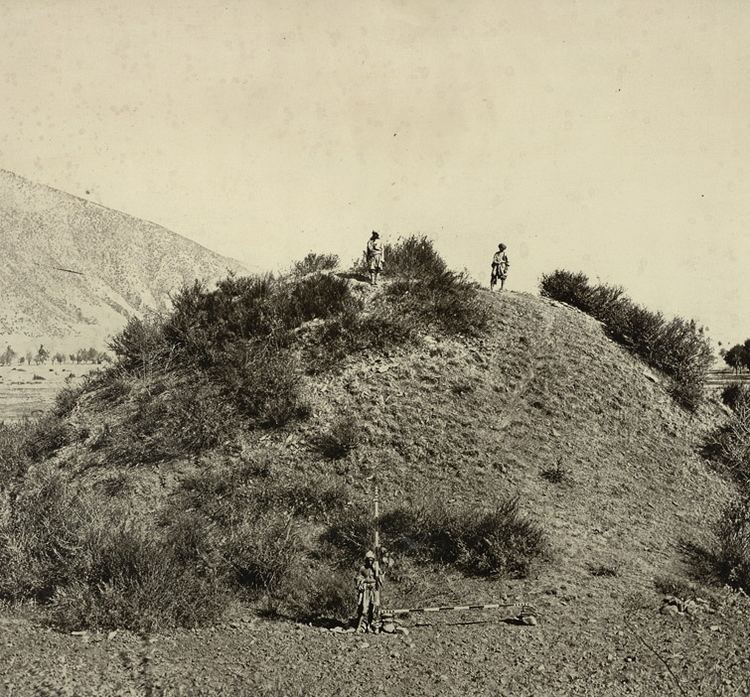
Azad Kashmir is part of the greater Kashmir region, which is the subject of a long-running conflict between Pakistan and India. The territory shares a border with Gilgit-Baltistan, together with which it is referred to by the United Nations and other international organisations as "Pakistan-administered Kashmir". Azad Kashmir is one-sixth of the size of Gilgit-Baltistan. The territory also borders Pakistan's Punjab province to the south and Khyber Pakhtunkhwa province to the west. To the east, Azad Kashmir is separated from the Indian-administered state of Jammu and Kashmir by the Line of Control, the de facto border between India and Pakistan. Azad Kashmir has a total area of 13,297 square kilometres (5,134 sq mi), and a total population of 4,045,366 as per the 2017 Census.

The territory has a parliamentary form of government modeled after the Westminster system, with its capital located at Muzaffarabad. The President is the constitutional head of state, while the Prime Minister, supported by a Council of Ministers, is the chief executive. The unicameral Azad Kashmir Legislative Assembly elects both the Prime Minister and President. The state has its own Supreme Court and a High Court, while the Government of Pakistan's Ministry of Kashmir Affairs and Gilgit-Baltistan serves as a link with Azad Kashmir's government, although Azad Kashmir is not represented in the Parliament of Pakistan.
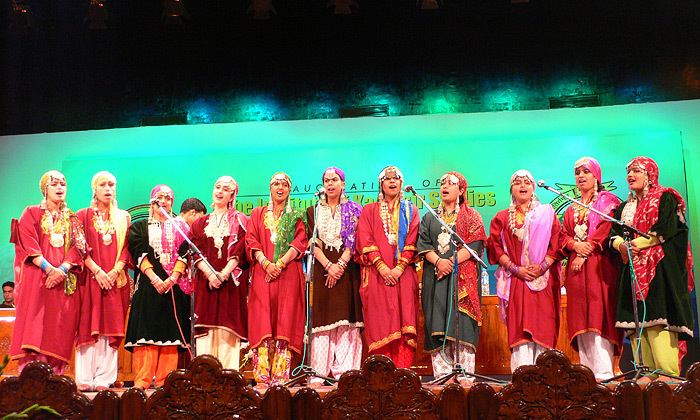
The 2005 earthquake killed 100,000 people and left another three million people displaced, with widespread devastation. Since then, with help from the Government of Pakistan and foreign donors, reconstruction of infrastructure is underway. Azad Kashmir's economy largely depends on agriculture, services, tourism, and remittances sent by members of the British Mirpuri community. Nearly 87% of the households own farms in Azad Kashmir, while the region has a literacy rate of approximately 72% and has the highest school enrollment in Pakistan.
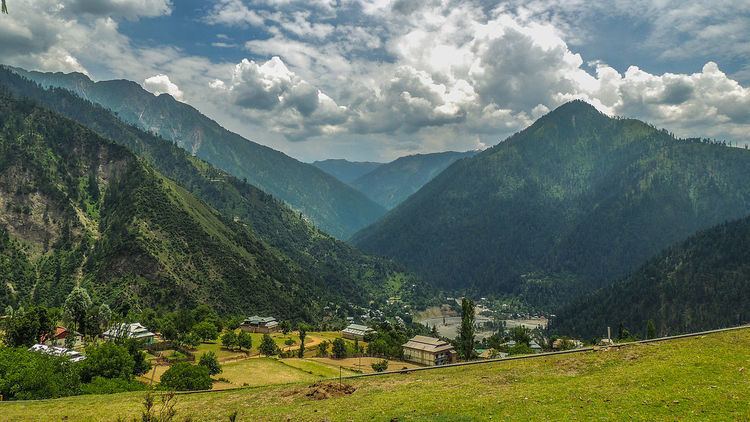
Vendor selling famous street food ristagushtaba of kashmir
Azad kashmir national anthem
History
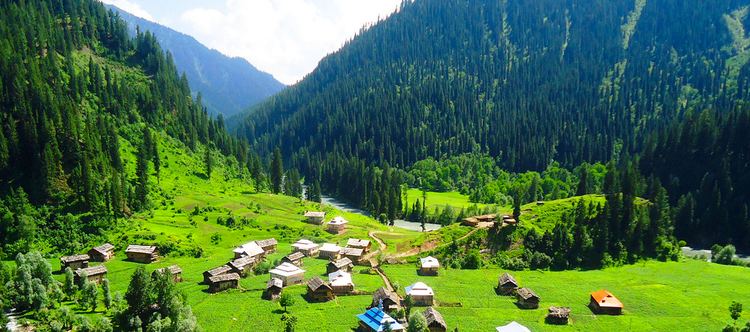
At the time of the Partition of India in 1947, the British abandoned their suzerainty over the princely states, which were left with the options of joining India or Pakistan or remaining independent. Hari Singh, the maharaja of Jammu and Kashmir, wanted his state to remain independent. Muslims in Western Jammu province (current day Azad Kashmir) and the Frontier Districts Province (current day Gilgit-Baltistan) had wanted to join Pakistan.
In Spring 1947, an uprising against the Maharaja broke out in Poonch, an area bordering the Rawalpindi division of West Punjab. Maharaja's administration is said to have started levying punitive taxes on the peasantry which provoked a local revolt and the administration resorted to brutal suppression. The area's population, swelled by recently demobilised soldiers following World War II, rebelled against the Maharaja's forces and gained control of almost the entire district. Following this victory, the pro-Pakistan chieftains of the western districts of Muzaffarabad, Poonch and Mirpur proclaimed a provisional Azad Jammu and Kashmir government in Rawalpindi on October 3, 1947. Khwaja Ghulam Nabi Gilkar, under the assumed name "Mr. Anwar," issued a proclamation in the name of the provisional government in Muzaffarabad. However, this government quickly fizzled out with the arrest of Anwar in Srinagar. On October 24, a second provisional government of Azad Kashmir was established at Palandri under the leadership of Sardar Ibrahim.
On October 21, several thousand Pashtun tribesmen from North-West Frontier Province poured into Jammu and Kashmir to liberate it from the Maharaja's rule. They were led by experienced military leaders and were equipped with modern arms. The Maharaja's crumbling forces were unable to withstand the onslaught. The raiders captured the towns of Muzaffarabad and Baramulla, the latter 20 miles (32 km) northwest of the state capital Srinagar. On October 24, the Maharaja requested military assistance from India, which responded that it was unable to help him unless he acceded to India. Accordingly, on October 26, 1947, Maharaja Hari Singh signed an Instrument of Accession, handing over control of defence, external affairs and communications to the Government of India in return for military aid. Indian troops were immediately airlifted into Srinagar. Pakistan intervened subsequently. Fighting ensued between the Indian and Pakistani armies, with the two areas of control more or less stabilised around what is now known as the "Line of Control".
India later approached the United Nations, asking it to resolve the dispute, and resolutions were passed in favour of the holding of a plebiscite with regard to Kashmir's future. However, no such plebiscite has ever been held on either side, since there was a precondition which required the withdrawal of the Pakistani Army along with the non-state elements and the subsequent partial withdrawal of the Indian Army. from the parts of Kashmir under their respective control – a withdrawal that never took place. In 1949, a formal cease-fire line separating the Indian- and Pakistani-controlled parts of Kashmir came into effect.
Following the 1949 cease-fire agreement with India, the government of Pakistan divided the northern and western parts of Kashmir that it occupied at the time of cease-fire into the following two separately-controlled political entities:
At one time under Pakistani control, Kashmir's Shaksgam tract, a small region along the northeastern border of Gilgit–Baltistan, was provisionally ceded by Pakistan to the People's Republic of China in 1963 and now forms part of China's Xinjiang Uygur Autonomous Region.
In 1972, the then current border between the Indian and Pakistani controlled parts of Kashmir was designated as the "Line of Control". This line has remained unchanged since the 1972 Simla Agreement, which bound the two countries "to settle their differences by peaceful means through bilateral negotiations". Some political experts claim that, in view of that pact, the only solution to the issue is mutual negotiation between the two countries without involving a third party such as the United Nations. The 1974 Interim Constitution Act was passed by the 48-member Azad Jammu and Kashmir unicameral assembly.
Government
Azad Jammu and Kashmir (AJK) is a self-governing state under Pakistani control, but under Pakistan's constitution the state is informally part of the country. Pakistan is administering the region as a self-governing territory rather than incorporating it in the federation since the UN-mandated ceasefire. Azad Kashmir has its own elected President, Prime Minister, Legislative Assembly, High Court, with Azam Khan as its present chief justice, and official flag.
Azad Kashmir's financial matters, i.e., budget and tax affairs, are dealt with by the Azad Jammu and Kashmir Council rather than by Pakistan's Central Board of Revenue. The Azad Jammu and Kashmir Council is a supreme body consisting of 14 members, 8 from the government of Azad Jammu and Kashmir and 6 from the government of Pakistan. Its chairman/chief executive is the prime minister of Pakistan. Other members of the council are the president and the prime minister of Azad Kashmir(or and individual nominated by her/him) and 6 members of the AJK Legislative Assembly. Azad Kashmir Day is celebrated in Azad Jammu and Kashmir on October 24, which is the day that the Azad Jammu and Kashmir government was created in 1947. Pakistan has celebrated Kashmir Solidarity Day on February 5 of each year since 1990 as a day of protest against India's de facto sovereignty over its State of Jammu and Kashmir. That day is a national holiday in Pakistan. Kashmiris in Azad Kashmir observe the Kashmir Black Day on October 27 of each year since 1947 as day of protest against military occupation in Indian controlled Jammu and Kashmir.
Brad Adams the Asia director at the U.S. based NGO Human Rights Watch has said in 2006; "Although 'azad' means 'free,' the residents of Azad Kashmir are anything but, the Pakistani authorities govern Azad Kashmir government with tight controls on basic freedoms." Scholar Christopher Snedden has observed that despite tight controls the people of Azad Kashmir have generally accepted whatever Pakistan has done to them, which in any case has varied little from how most Pakistanis have been treated (by Pakistan). According to Christopher Snedden one of the reasons for this was that the people of Azad Kashmir had always wanted to be a part of Pakistan.
Consequently, having little to fear from a pro-Pakistan population devoid of options, Pakistan imposed its will through the Federal Ministry of Kashmir Affairs and failed to empower the people of Azad Kashmir, allowing genuine self-government for only a short period in the 1970s. The Interim Constitution of the 1970s only allows the political parties that pay allegiance to Pakistan: "No person or political party in Azad Jammu and Kashmir shall be permitted... activities prejudicial or detrimental to the State's accession to Pakistan." The pro-independence Jammu and Kashmir Liberation Front has never been allowed to contest elections in Azad Kashmir. While the Interim Constitution does not give them a choice, the people of Azad Kashmir have not considered any option other than joining Pakistan. Except in the legal sense, Azad Kashmir has been fully integrated into Pakistan.
Development in AJK
According to the project report by the Asian Development Bank; The Asian Development Bank has set out development goals for Azad Kashmir in the areas of Health, Education, Nutrition and Social development. The whole project is estimated to cost $76 million Dollars. Germany between 2006 and 2014 has also donated $38,180,000 towards the AJK Health Infrastructure Programme.
Administrative divisions
The state is administratively divided into three divisions which, in turn, are divided into ten districts.
Geography and climate
The northern part of Azad Jammu and Kashmir encompasses the lower part of the Himalayas, including Jamgarh Peak (15,531 feet [4,734 meters]). However, Sarwali peak in the Neelum Valley is the highest peak in the state. Fertile, green, mountainous valleys are characteristic of Azad Kashmir's geography, making it one of the most beautiful regions on the subcontinent.
The southern parts of Azad Kashmir including Bhimber, Mirpur and Kotli districts has extremely hot weather in summers and moderate cold weather in winters. It receives rains mostly in monsoon weather.
In the central and northern parts of state weather remains moderate hot in summers and very cold and chilly in winter. Snow fall also occurs there in December and January.
This region receives rainfall in both winters and summers. Muzaffarabad and Pattan are among the wettest areas of the state. Throughout most of the region, the average rainfall exceeds 1400 mm, with the highest average rainfall occurring near Muzaffarabad (around 1800 mm). During summer, monsoon floods of the Jhelum and Leepa rivers are common, due to high rainfall and melting snow.
Ethnic groups
Azad Jammu and Kashmir has an almost entirely Muslim population. Most residents of the region are not ethnic Kashmiris. The majority of people in Azad Kashmir are ethnically Punjabi. While Urdu is the official language of the region, other languages commonly spoken are Pahari, Gojri and Potohari. The main communities living in this region are as follows:
Culture
The culture of Azad Kashmir has many similarities to that of northern Punjabi (Potohar) culture in Punjab province. The natives of Azad Kashmir speak Urdu, Potwari and Pahari. The Kashmiri language is spoken by hardly 5% of Azad Kashmir's population according to Kashmiri journalist Shujaat Bukhari. Professor Khawaja Abdul Rehman states that the Kashmiri language is on the verge of dying out in the Neelam Valley.
The traditional dress of the women is the shalwar kameez in Pahari style. The shalwar kameez is commonly worn by both men and women. Women use shawl to cover their head and upper body.
Economy
Historically the economy of these areas now called ‘Azad’ Kashmir has been agricultural which meant that land was the main source or mean of production. This means that all food for immediate and long term consumption was produced from land. The produce included various crops, fruits, vegetables etc. Land was also the source of other livelihood necessities such as wood, fuel, grazing for animals which then turned into dairy products. Because of this land was also the main source of revenue for the governments whose primary purpose for centuries was to accumulate revenue.
Agriculture is a major part of Azad Kashmir's economy. Low-lying areas that have high populations grow crops like barley, mangoes, millet, corn (maize), and wheat, and also raise cattle. In the elevated areas that are less populated and more spread-out, forestry, corn, and livestock are the main sources of income. There are mineral and marble resources in Azad Kashmir close to Mirpur and Muzaffarabad. There are also graphite deposits at Mohriwali. There are also reservoirs of low-grade coal, chalk, bauxite, and zircon. Local household industries produce carved wooden objects, textiles, and dhurrie carpets. There is also an arts and crafts industry that produces such cultural goods as namdas, shawls, pashmina, pherans, Papier-mâché, basketry copper, rugs, wood carving, silk and woolen clothing, patto, carpets, namda gubba, and silverware. Agricultural goods produced in the region include mushrooms, honey, walnuts, apples, cherries, medicinal herbs and plants, resin, deodar, kail, chir, fir, maple, and ash timber.
The migration to UK was accelerated and by the completion of Mangla Dam in 1967 the process of ‘chain migration’ became in full flow. Today, remittances from British Mirpuri community make a critical role in AJK's economy. In the mid-1950s various economic and social development processes were launched in Azad Kashmir. In the 1960s, with the construction of the Mangla Dam in Mirpur District, the Azad Jammu and Kashmir Government began to receive royalties from the Pakistani government for the electricity that the dam provided to Pakistan. During the mid-2000s, a multibillion-dollar reconstruction began in the aftermath of the 2005 Kashmir earthquake.
In addition to agriculture, textiles, and arts and crafts, remittances have played a major role in the economy of Azad Kashmir. One analyst estimated that the figure for Azad Kashmir was 25.1% in 2001. With regard to annual household income, people living in the higher areas are more dependent on remittances than are those living in the lower areas. In the latter part of 2006, billions of dollars for development were mooted by international aid agencies for the reconstruction and rehabilitation of earthquake-hit zones in Azad Kashmir, though much of that amount was subsequently lost in bureaucratic channels, leading to considerable delays in help getting to the most needy. Hundreds of people continued to live in tents long after the earthquake. A land-use plan for the city of Muzaffarabad was prepared by the Japan International Cooperation Agency.
Kashmir as a whole is the one of the most beautiful regions in the world. Some well-known and popular tourist destinations are the following:
Education
The literacy rate in Azad Kashmir was 62% in 2004, higher than in any region in Pakistan. However, only 2.2% were graduates, compared to the average of 2.9% for Pakistan.
Universities
The following is a list of universities recognised by Higher Education Commission of Pakistan (HEC):
* Granted university status.
Cadet College Pallandri
Medical colleges
The following is a list of undergraduate medical institutions recognised by Pakistan Medical and Dental Council (PMDC) as of 2013.
Private medical colleges
Sports
In terms of sports, football, cricket and volleyball are very popular in Azad Kashmir. Many tournaments are also held throughout the year and in the holy month of Ramazan night time floodlit tournaments are also organised.
New Mirpur City has a cricket stadium (Quaid-e-Azam Stadium) which has been taken over by the Pakistan Cricket Board for renovation to bring it up to International standards. There is also a cricket stadium in Muzaffarabad with the capacity of 8,000 people. This stadium has hosted 8 matches of Inter-District Under 19 Tournament 2013.
There are also registered football clubs namely, Pilot Football Club, Youth Football Club, Kashmir National FC and Azad Super FC.
